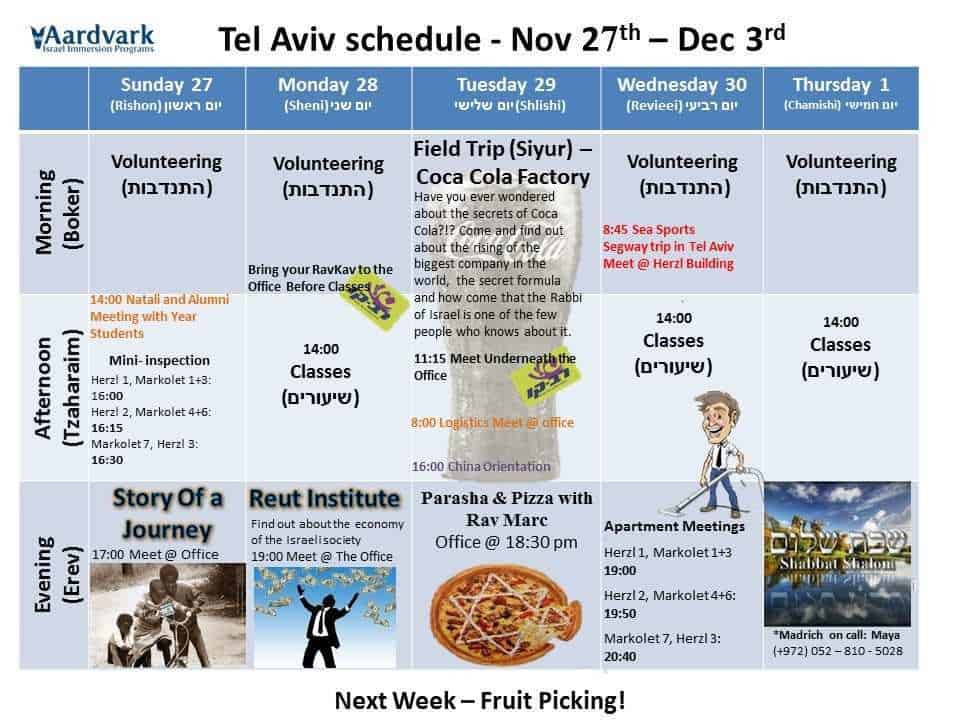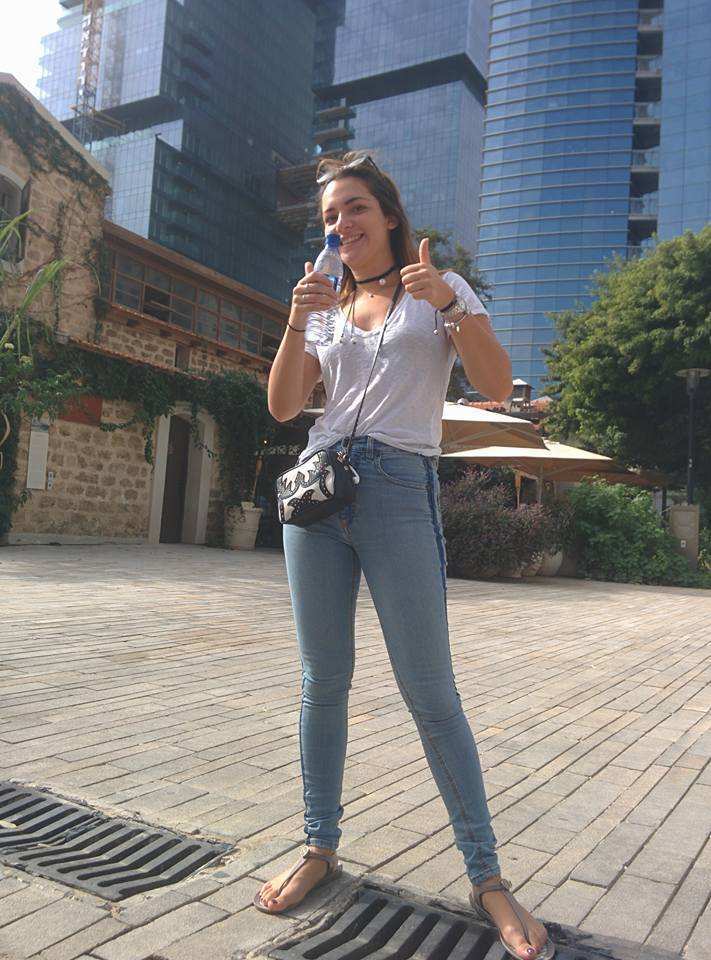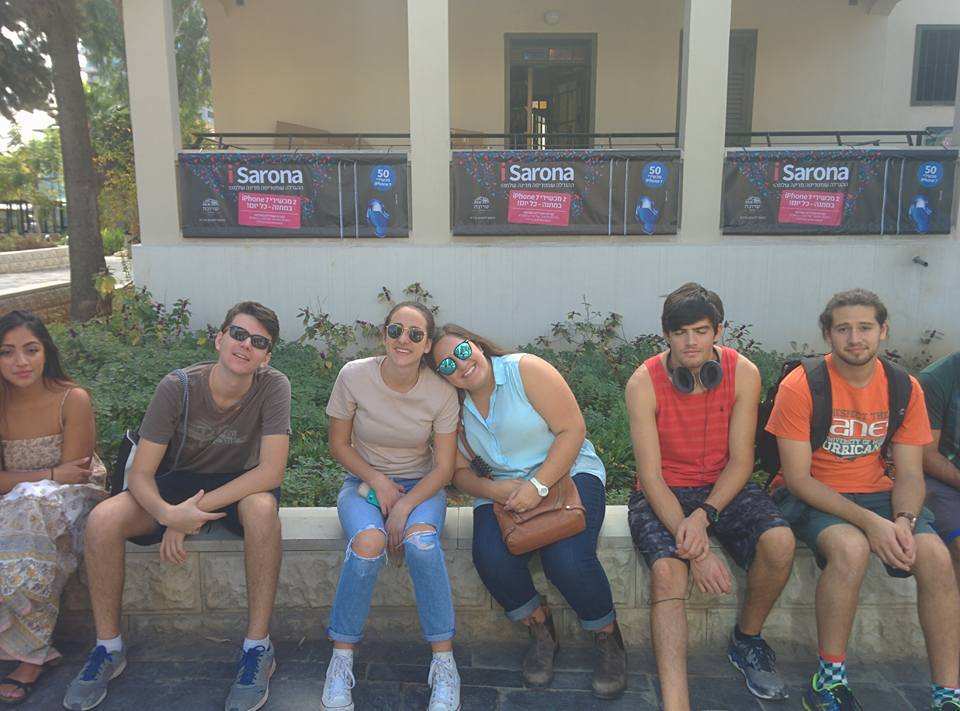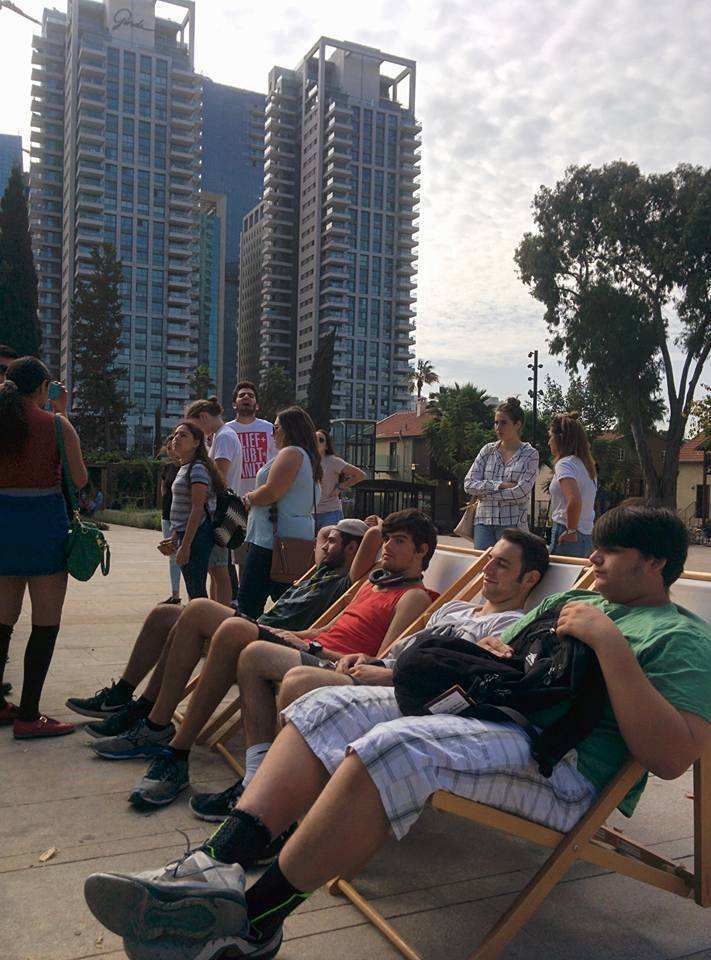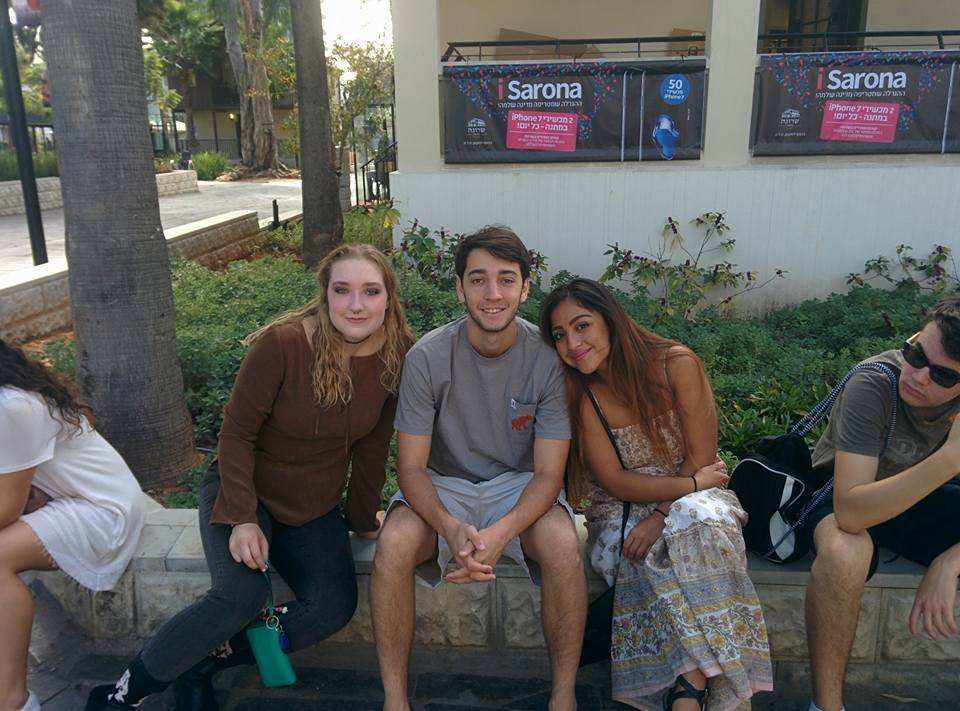Shalom Parents!
Another great week has come to an end.
I hope you are ready for some of our great highlights of this week!
On Sunday evening, the students gathered in their apartments to meet with their madrichim. The madrichim came with the next part of the puzzle of the array – “My Israeli Journey”. The activity is called “Appreciative Inquiry”. Its purpose is to do some self-reflecting about some of my successes throughout the semester. What were the surroundings who helped me succeed?, What is the kind of environment which is more productive for me?
The students called it the “talking walls” I believe, because of the signs and questions that were hanged on their apartments walls that were meant to inspire the discussion later on.
On Monday, we had an activity about the Israeli-Palestinian Conflict with Windows, a non-profit organization comprised of Palestinians and Jews that work together to create a future in our region that is based on democracy. The group was divided into two smaller groups and each group had its own space for the activity. On the wall of every classroom, there were a few sentences that represent beliefs or myths within the Israeli society. Some examples of this are “A people without a land returned to a land without people” or “the Jewish people had returned to their land after 2000 years of exile.” The goal of this activity was to explore these ideas and encourage further discussion on the beliefs that have been circulated and how they came about; this activity definitely achieved these goals. The group was very engaged in the discussions which provoked many
interesting questions.
On Tuesday morning, the group went to Sarona, a Templar colony formed by German settlers in 1871. This agricultural German settlement became a model for the Jewish pioneers. During WWII and the rise of the Nazi empire, many of the Templars had become members of the Nazi party. As a result, they ended up being locked up by the British forces and eventually deported. Today Sarona has been turned into a BEAUTIFUL hangout place and a tourist center. It is full with stores, parks, and the amazing “Sarona Market”. After the tour, the participants stayed at the center to enjoy the vibrant atmosphere.
On Wednesday, the staff organized a great activity that dealt with the streams of Judaism. In the moadon, there were many questions about different aspects of Judaism spread around. For an example, “What is the Torah?” Each question had between 6-7 different answers. Each answer represented a different stream in Judaism ( Reform, Conservative, Orthodox, Secular, etc.) and was assigned a fruit. The students needed to choose the answer that best matched their perspective. Then at the end of the activity, each of them had a different fruit smoothie that represented their opinions. “Surprisingly”, each smoothie was completely different from the other. Which basically, mean that their Jewish perspective is quite different from each other. The discussion Elad led afterward was impressive, both by the amount of load the students have towards this subject and by the willing to talk about it and to explore new ideas.
On their Hebrew classes this week, the students were learning about some Israeli songs. The “fluent” class was asked to translate English song into Hebrew. Leeor Margalit did an excellent job! She translated the song Dreams by Langston Hughes. – Attached is the song she transleted in Hebrew.
In the introduction to psychology course, Dr. Smith is instructing the students about psychological disorders. The students are learning that mental illness and psychological disorders are one in the same, people tend to use these terms interchangeably. —Usually we call psychological or mental disorders, psychopathology. —Psychopathology is defined as patterns of thinking, feeling and behaving that are maladaptive, disruptive or uncomfortable for those who are affected and/or for those with whom they come in contact with. In the next few weeks, the students will learn more about specific psychopathologies such as anxiety, somatoform, mood, personality disorders, etc.
Additionally, the social psychology course, the students are learning the concept and theories of how people justify their actions. —One of the theories that the students are learning is called cognitive dissonance. Cognitive dissonance states that when a person is confronted with information implying that one has behaved in a way that is irrational, immoral, or stupid, they may experience a good deal of discomfort. This feeling of discomfort could be caused by an action that runs counter to their customary (typically positive) conception of the self.
That will be all for now,
and until next time,
Shabbat Shalom,
Adi
